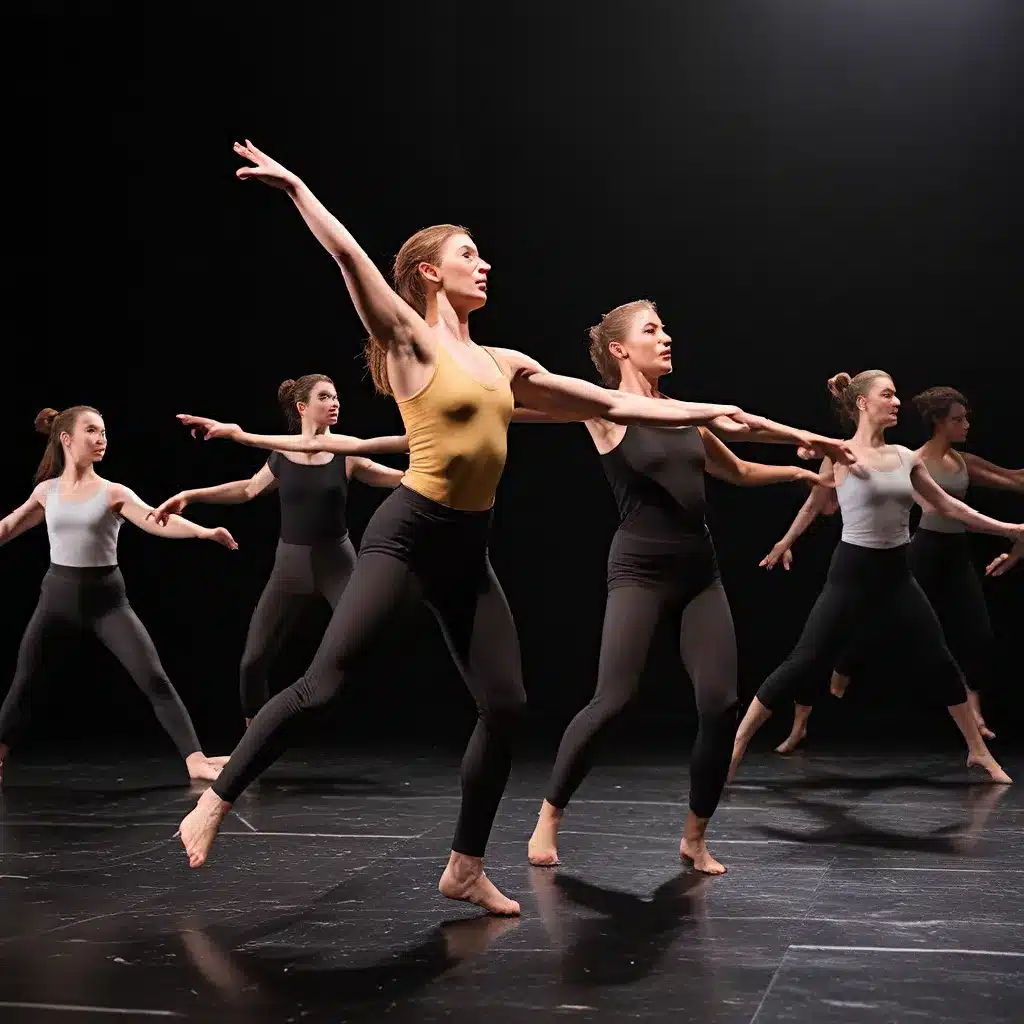
Bridging the Gap: Where Theater and Dance Collide
As a lifelong performer and passionate advocate for the arts, I’ve always been fascinated by the dynamic interplay between theater and dance. These two seemingly distinct disciplines, when combined, have the power to unleash a captivating world of expression and storytelling. It’s this intersection that has drawn me to the Musical Theater Center, a place where I’ve had the privilege of exploring the boundless possibilities that arise when the body becomes the primary vehicle for conveying narratives, emotions, and desires.
The Evolution of Physical Theater
The roots of this rich tapestry can be traced back to the pioneering work of visionaries like Etienne Decroux, Vsevolod Meyerhold, and Jacques Lecoq, who each left an indelible mark on the landscape of physical performance. Decroux, the godfather of modern mime, championed the idea of “corporeal mime,” which focused on unleashing the expressive potential of the body and the intricate interplay between movement and emotion. Meyerhold, the renowned Russian theater director, developed a systematic approach to actor training based on the principles of movement and gesture, known as biomechanics, that revolutionized the way performers approached their craft.
Lecoq, the French actor and mime, took a more holistic approach, incorporating elements of movement, mask work, and improvisation into his actor training. His emphasis on playful exploration and physical expression transformed the way performers connected with their characters, encouraging them to fully embody their roles through movement and gesture.
The Convergence of Dance and Theater
It’s within this rich tapestry of physical theater that the intersection of dance and musical theater becomes particularly intriguing. Modern dance, pioneered by the likes of Martha Graham and Doris Humphrey, has long been celebrated for its emphasis on precision, control, and emotional authenticity of movement. These principles, when applied to the world of musical theater, can unlock a whole new level of expressive potential.
Corporeal mime, with its focus on the integration of text and movement, offers performers a versatile platform for conveying complex narratives with depth and nuance. By mastering the techniques of corporeal mime, performers can infuse their work with a level of authenticity and emotional connection that transcends the boundaries of traditional theater.
Unlocking the Expressive Potential
At the Musical Theater Center, we’ve been exploring the synergies between contemporary dance and musical theater, with the aim of empowering our students to become true masters of physical expression. Our curriculum is designed to provide a comprehensive education in the art of physical theater, with a strong emphasis on corporeal mime and the integration of other disciplines like contemporary dance, physical training, and voice work.
Through rigorous training and hands-on exploration, our students learn to harness the full expressive power of their bodies, delving into the subtleties of movement, gesture, and emotional connection. They’re challenged to push the boundaries of their craft, to experiment with new forms of storytelling, and to find innovative ways of engaging their audiences.
Embracing the Unexpected
One of the most thrilling aspects of this journey is the element of surprise and discovery that often arises. As our students immerse themselves in the world of physical theater, they’re often confronted with unexpected challenges and opportunities that push them to think outside the box.
I’ll never forget the time one of our students, a classically trained dancer, decided to incorporate elements of street dance into her musical theater performance. The result was a captivating blend of technical precision and raw, kinetic energy that left the audience on the edge of their seats. Or the time another student, a natural born comedian, used the principles of corporeal mime to create a hilarious and heartwarming character that had everyone in stitches.
Cultivating Artistic Versatility
The beauty of this approach is that it not only enhances the expressive capabilities of our students but also cultivates a sense of artistic versatility that is invaluable in the ever-evolving landscape of the performing arts. By mastering the art of physical theater, our students become adept at seamlessly transitioning between different genres and styles, effortlessly adapting to the unique demands of each production.
I’ve seen our graduates go on to captivate audiences in a wide range of productions, from traditional book musicals to cutting-edge devised theater pieces. Their ability to infuse their performances with a deep emotional resonance and a physical dynamism that truly brings the story to life is a testament to the power of the training they’ve received.
Nurturing the Next Generation
As I reflect on the journey we’ve taken here at the Musical Theater Center, I’m filled with a sense of boundless optimism for the future. The students who walk through our doors are not just talented performers; they’re innovative thinkers, fearless risk-takers, and passionate advocates for the transformative power of the arts.
It’s our privilege to nurture this next generation of performers, to provide them with the tools and the confidence to push the boundaries of what’s possible on the musical theater stage. And as they go forth and captivate audiences around the world, I can’t wait to see the new frontiers they’ll explore, the unexpected collaborations they’ll forge, and the awe-inspiring moments of magic they’ll create.
So, if you’re ready to embark on a journey of physical and emotional exploration, to unleash the full expressive potential of your body and your artistry, I invite you to join us at the Musical Theater Center. Together, let’s redefine the boundaries of what’s possible on the musical theater stage.

